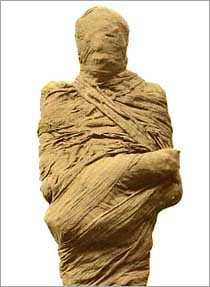DK Society & Beliefs: Ancient Religions
Some religions have died out, along with the cultures that practiced them. We know about them and their practices, such as belief in the AFTERLIFE, through their buildings and artifacts. The best-known are from Egypt, Greece, and Central America.
The Egyptian sun god Ra could be shown with the head of a falcon, a ram, or an old man. Like many long-lived religions, Ancient Egyptian beliefs combined gods from several local religions.
The greatest god of the Aztec religion was Quetzalcoatl, creator of the world, who was depicted as a snake with quetzal feathers. When the Spanish conquistador Cortés landed in Mexico, the Aztec ruler believed he was the returning Quetzalcoatl.
The names of the Ancient Roman and Greek gods are still used in Western naming systems. All the planets of the Solar System (aside from Earth) are named after Roman gods. The swift-footed messenger god Mercury gives his name to a silvery liquid metal.
The idea of an afterlife—what happens to people after they die—has been around as long as the oldest religions. Ancient rulers were often buried with large numbers of useful items, such as model boats and food, to help them live on in the next world.
Many religions believe that there is an eternal, godlike part in people, called a soul or spirit. Some religions, such as Hinduism, believe this soul inhabits all living things. After death, the soul returns to Earth in a new body, or goes on to inhabit heaven or hell.
Some Ancient Egyptian pharaohs were buried in huge pyramids. These monumental tombs symbolically pointed to the stars to guide the pharaoh’s soul on its journey to the heavens. The most famous pyramids are the three in Giza, near Cairo.

